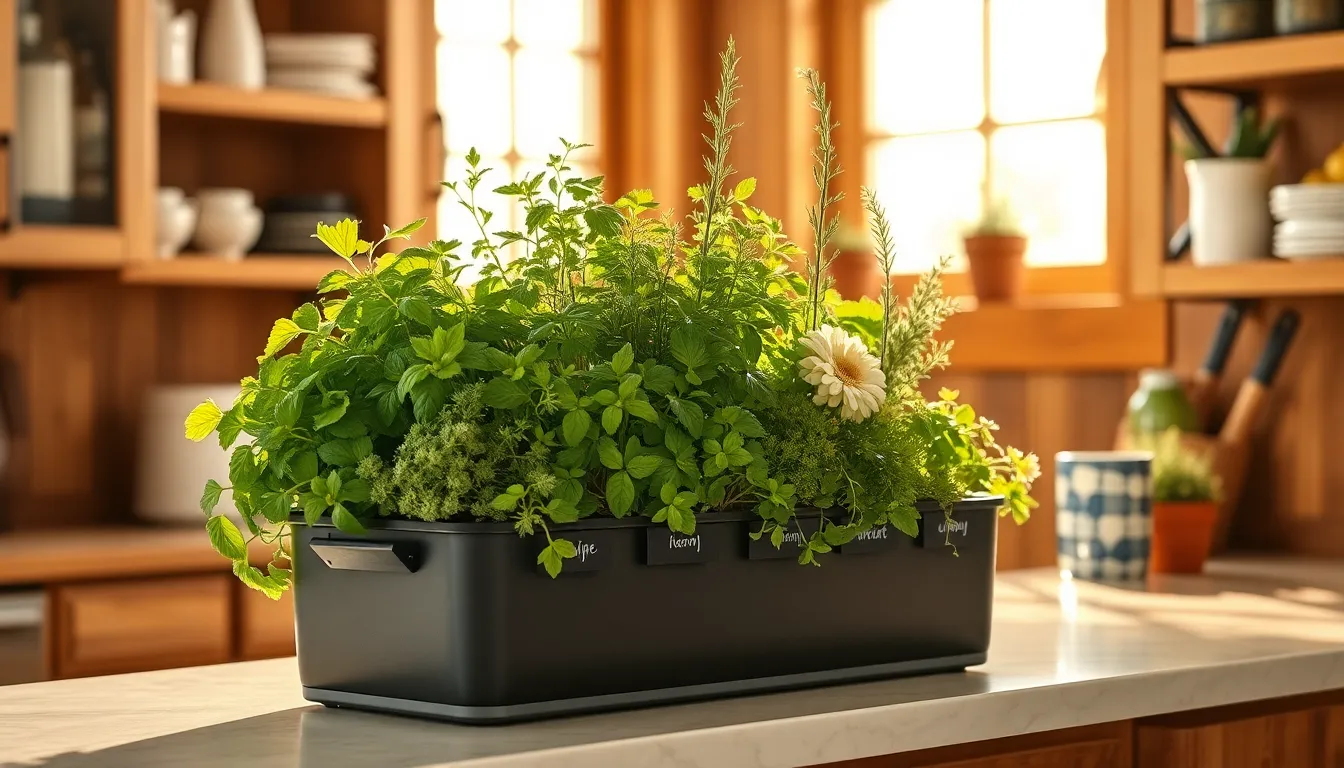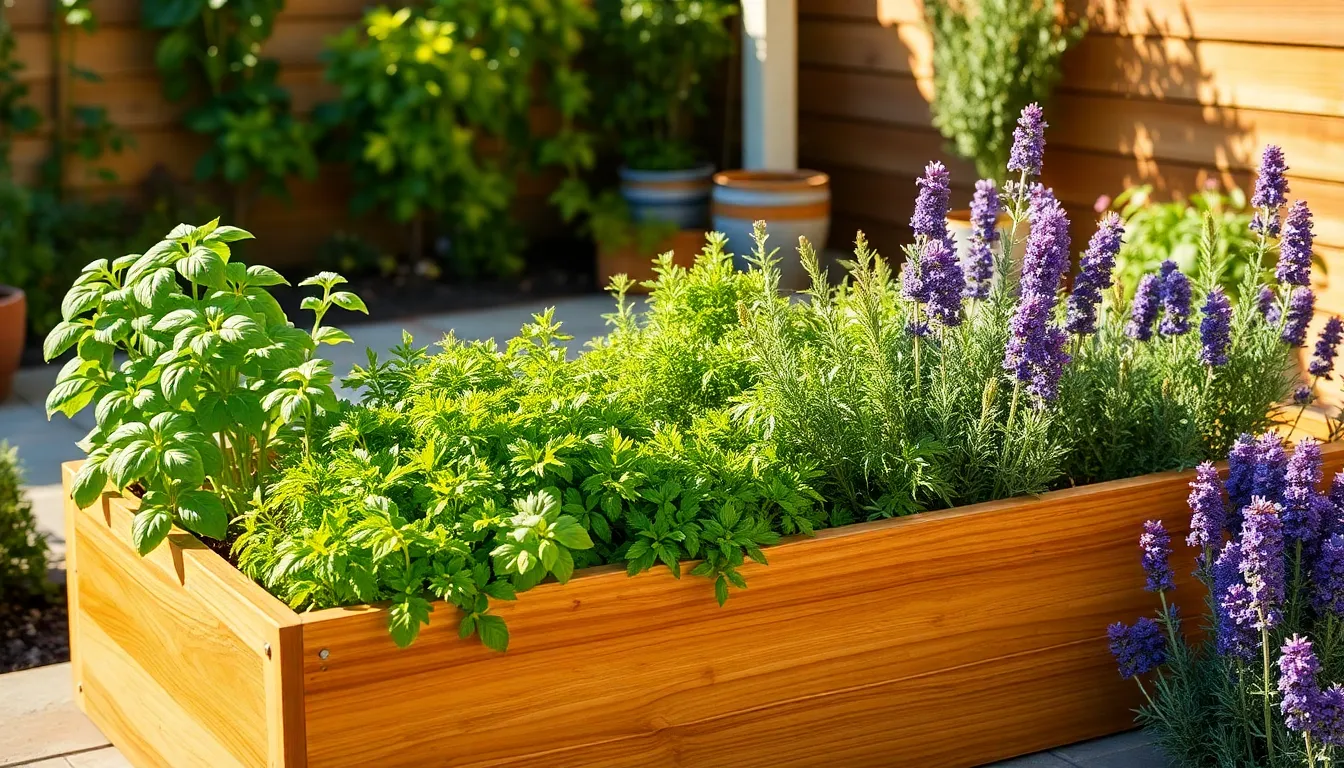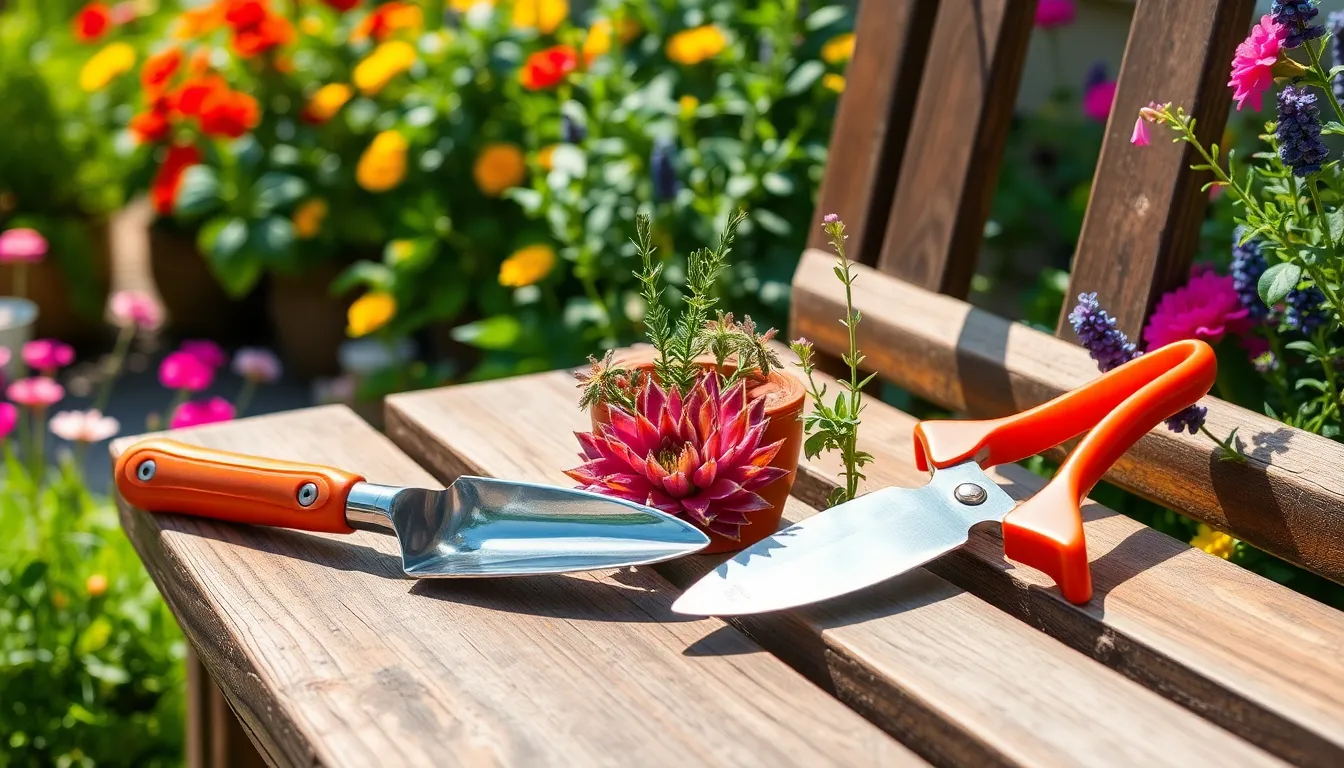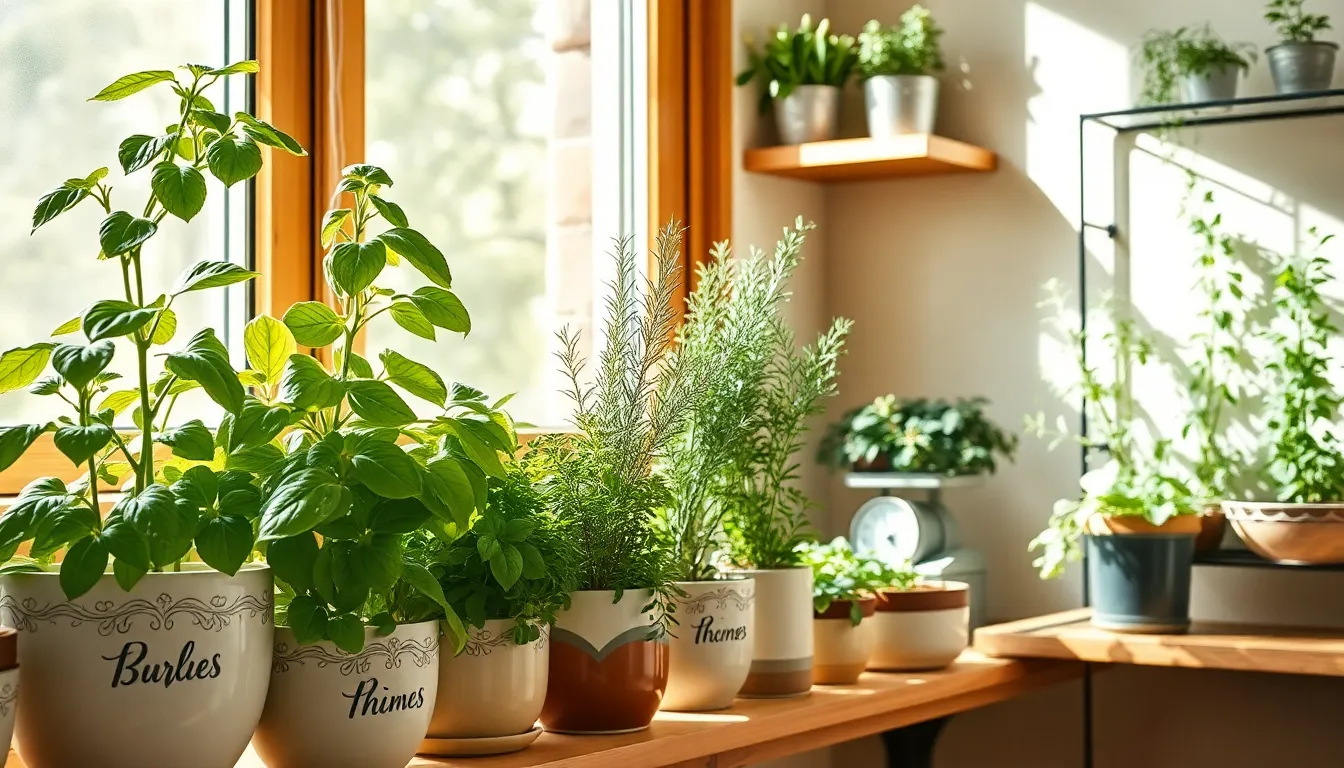Imagine stepping into your kitchen each day and being greeted by the vibrant scents of fresh basil, rosemary, and mint. An indoor herb garden not only brings life and color to your space but also enriches your culinary adventures with the freshest ingredients right at your fingertips. Whether you’re a novice gardener curious about starting your first green project or a seasoned horticulturist looking to add a touch of nature indoors, cultivating an herb garden in your kitchen is a rewarding endeavor that requires minimal space and effort.
A kitchen herb garden serves as a delightful intersection of beauty and practicality, transforming everyday cooking into a celebration of flavors. With the right guidance, you’ll learn how to select the perfect herbs for your indoor oasis, understand their unique needs, and ensure they thrive in a kitchen environment. In this article, we’ll explore the essentials of herb selection, planting techniques, and ongoing care—all designed to help your indoor garden flourish. Whether you’re growing for taste, aesthetics, or the pure joy of nurturing life, you’ll find that this venture offers both sensory and personal satisfaction.
Select Suitable Kitchen Herbs
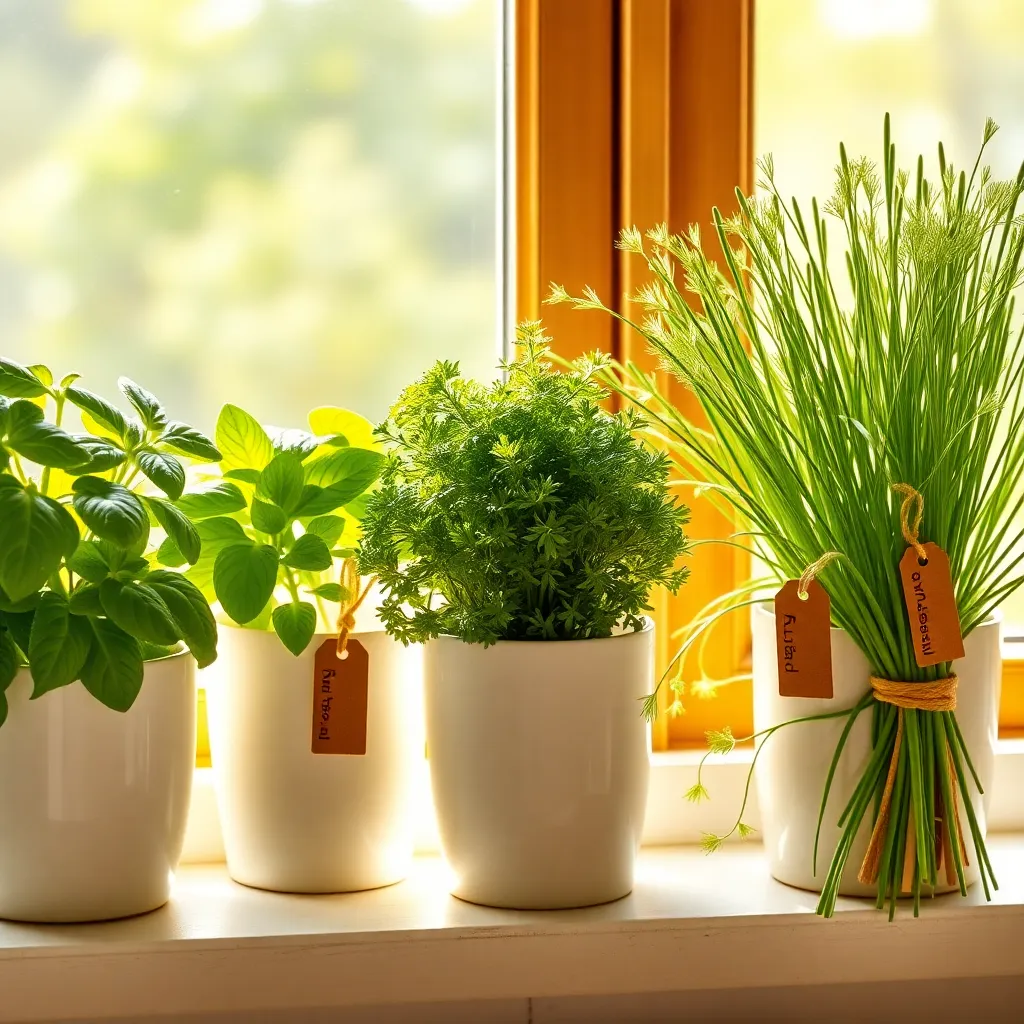
Choosing the right herbs is essential for a thriving kitchen garden. Start with easy-to-grow options like basil, chives, and parsley, which are well-suited for indoor environments.
Consider the light conditions in your kitchen before selecting herbs. Most herbs, such as rosemary and thyme, require at least six hours of sunlight per day, so a south-facing window is ideal.
For those with less natural light, opt for mint and cilantro, which can tolerate partial shade. Supplement with a grow light if necessary to ensure your herbs receive adequate lighting.
Soil quality greatly impacts herb growth, so choose a well-draining potting mix enriched with organic matter. Water your herbs consistently, but ensure pots have drainage holes to prevent root rot by allowing excess water to escape.
To enhance the productivity and lifespan of your herbs, practice regular harvesting. Pinch back the tops of herbs like basil to encourage bushy growth and avoid flowering, which can alter the flavor.
Prepare Indoor Planting Containers
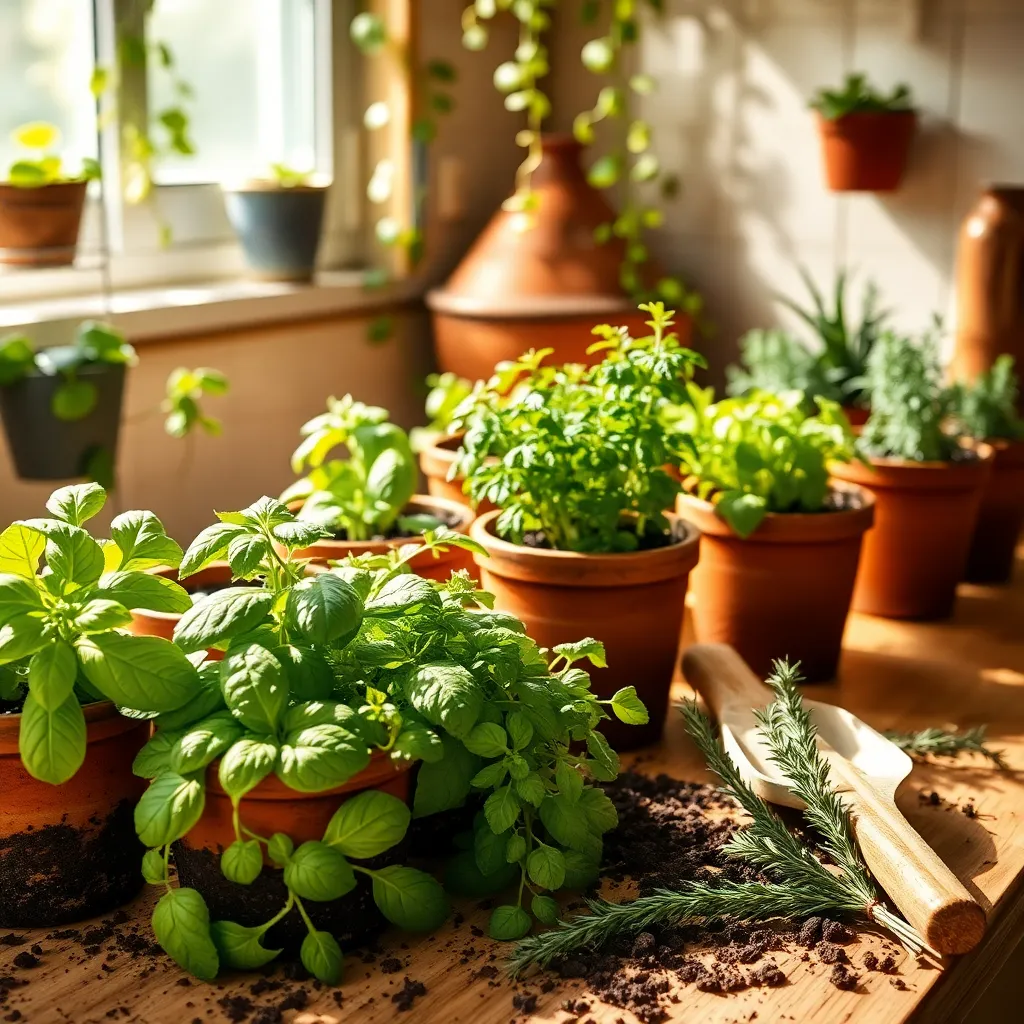
To start your kitchen herb garden, it’s crucial to choose the right containers for planting. Selecting containers with adequate drainage holes is essential to prevent waterlogging and root rot.
Ensure each pot is appropriate for the herb’s growth requirements. For example, basil benefits from a pot that’s at least six inches deep to accommodate its root system.
When filling your containers, use a high-quality potting mix specifically designed for indoor plants. A mix that includes perlite or vermiculite will help with aeration and drainage, crucial for healthy herb growth.
Consider adding a layer of small stones at the bottom of the container to enhance drainage further. This simple step can make a significant difference in preventing overwatering issues.
For those looking to maximize space, consider using vertical planters or tiered shelving. These options allow you to grow more herbs in a compact area while ensuring each plant gets adequate light.
Ensure Optimal Sunlight Exposure
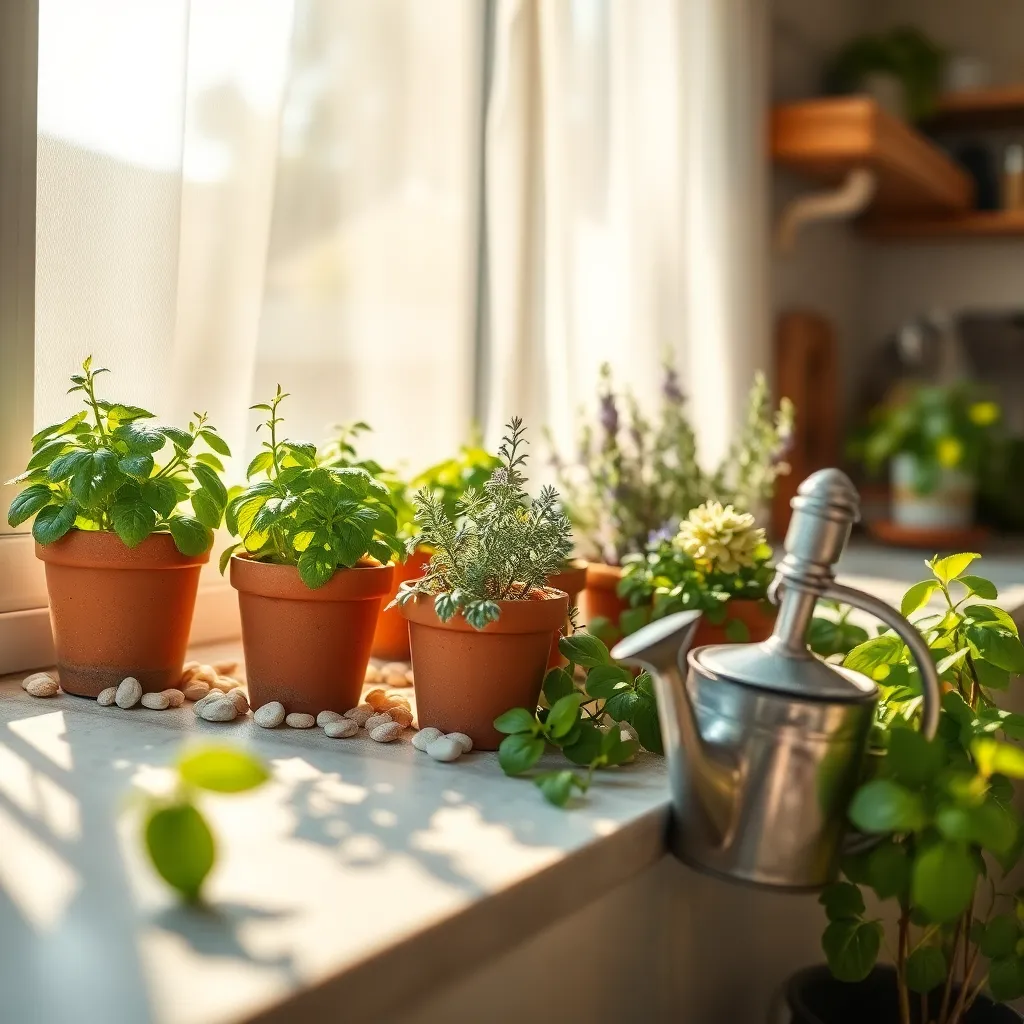
To ensure your kitchen herb garden thrives, it’s crucial to provide optimal sunlight exposure. Most herbs like basil, parsley, and thyme require at least six hours of direct sunlight daily. Position your herb containers on a south-facing windowsill if possible, as this typically offers the most sunlight throughout the day. If a south-facing window isn’t available, consider an east or west-facing window to capture morning or afternoon sun.
For those without adequate natural light, supplementary lighting is a practical solution. Use full-spectrum LED grow lights, which mimic natural sunlight, placed about 6-12 inches above the plants. Set a timer on these lights to ensure your herbs receive consistent illumination, ideally for 12 to 16 hours a day. This approach helps maintain growth and flavor intensity, especially during shorter winter days.
Regularly rotate your herb containers to promote even growth and prevent them from leaning towards the light source. This ensures that all sides of the plant receive equal exposure, fostering a well-rounded and healthy growth pattern. Also, keep windows clean and unobstructed to maximize the amount of light reaching your plants.
Advanced gardeners may also explore the use of reflective surfaces around the plants to increase light exposure. Aluminum foil or reflective Mylar can be strategically placed to bounce light back onto the plants, enhancing photosynthesis. This technique is especially beneficial in dimmer corners of your kitchen where natural light is less abundant.
Maintain Consistent Watering Schedule
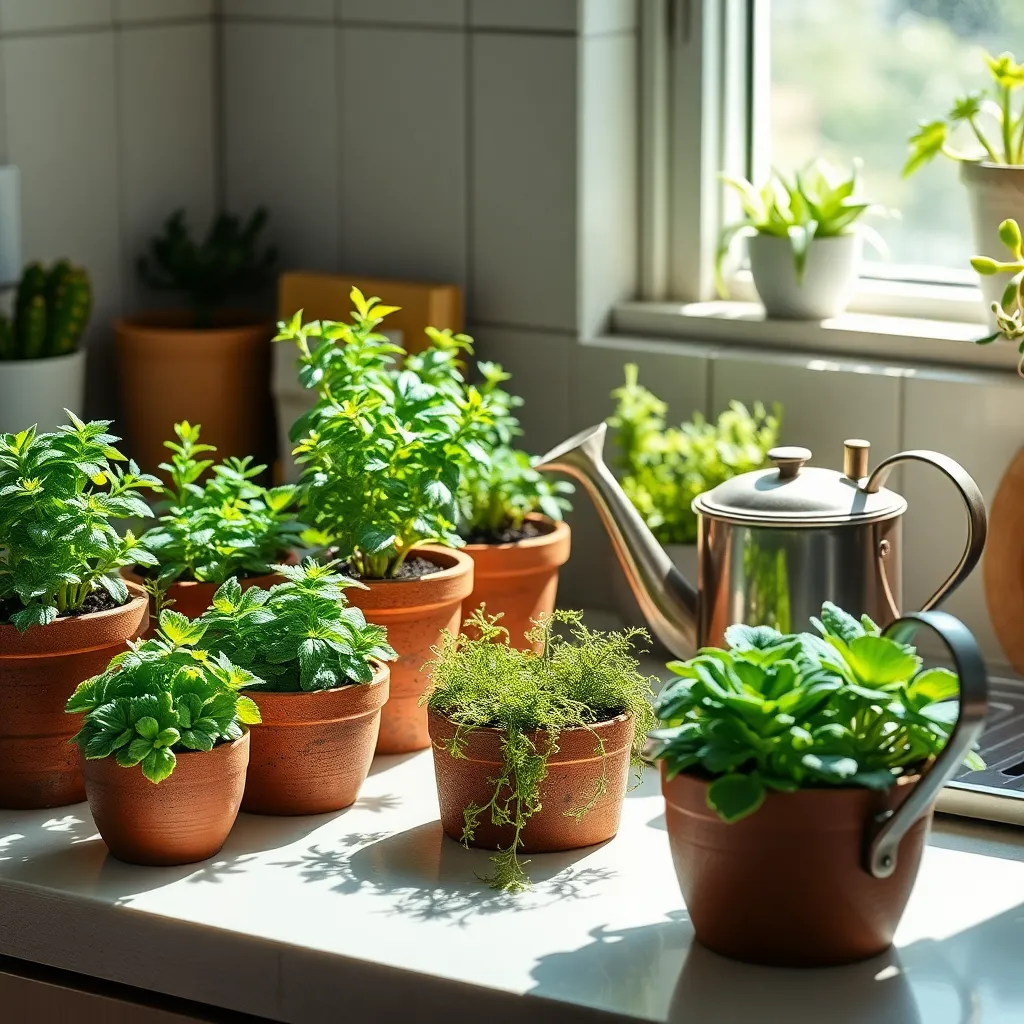
To maintain a thriving herb garden in your kitchen, it’s crucial to establish a consistent watering schedule. Herbs have specific water needs that vary depending on their type, the growing environment, and the season.
Start by understanding the water requirements of each herb you’re growing. For example, basil and parsley prefer consistently moist soil, while rosemary and thyme thrive with less frequent watering.
Use a potting mix that ensures good drainage to prevent root rot, which is a common issue in indoor gardens. A mix of peat, perlite, and vermiculite works well for most herbs, allowing excess water to escape easily.
Consider using self-watering pots or placing a saucer beneath pots to catch excess water, ensuring roots don’t sit in water. To check if your herbs need watering, insert your finger about an inch into the soil—if it’s dry at that depth, it’s time to water.
Advanced gardeners might use a moisture meter for precise measurements, especially in drier climates or during hot months. By adjusting your watering based on specific plant needs and environmental conditions, you’ll help your kitchen herb garden flourish.
Harvest Herbs Regularly for Growth
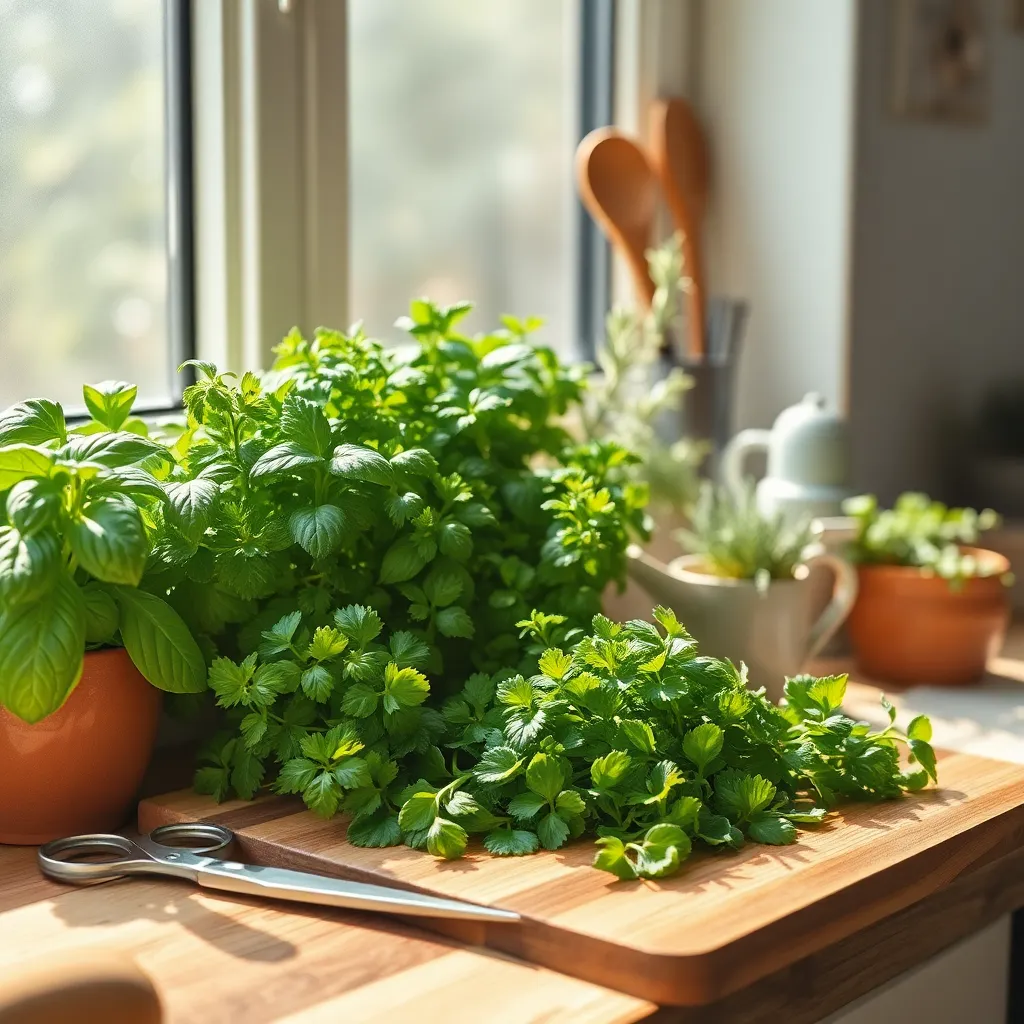
Regular harvesting of herbs is crucial not just for your kitchen, but also for the health of the plants themselves. By trimming your herbs frequently, you encourage them to grow bushier and more robust, maximizing their yield over time.
When you cut back herbs like basil, mint, or cilantro, it stimulates new growth, making the plant fuller. Focus on snipping just above a pair of leaves, which will encourage two new stems to develop, effectively doubling your potential harvest.
Optimal harvest timing can vary, but a general rule is to start when the plants have reached at least six inches in height. For the best flavor and to avoid bitterness, aim to harvest in the morning when the essential oils are most concentrated.
Don’t be afraid to prune herbs back by up to a third of their height; this won’t harm them. Instead, it will allow sunlight to reach inner leaves, preventing legginess and keeping the plant in a productive growth phase.
Conclusion: Growing Success with These Plants
In nurturing your kitchen herb garden, you’ve explored five pivotal relationship concepts: patience in growth, nurturing through consistent care, the balance of space and closeness, adapting to changing needs, and celebrating small wins. These principles not only cultivate thriving plants but also nurture flourishing relationships. As you embark on this journey, take an actionable step today by choosing one herb to plant and care for, symbolizing your commitment to growth in your relationship.
Bookmark this article as a valuable resource, a gentle reminder of the parallels between cultivating herbs and nurturing bonds. Let it be your guide, offering insights and encouragement whenever you need a boost. Remember, just as a garden flourishes with attention and time, so do relationships. By embracing these practices, you’re not only planting seeds but also fostering a future filled with connection and love. Together, let’s cultivate the garden of your relationship, ensuring it grows lush and vibrant for years to come. Seize this opportunity to enrich your life and relationships—save this article and take the first step towards a thriving, love-filled future.

